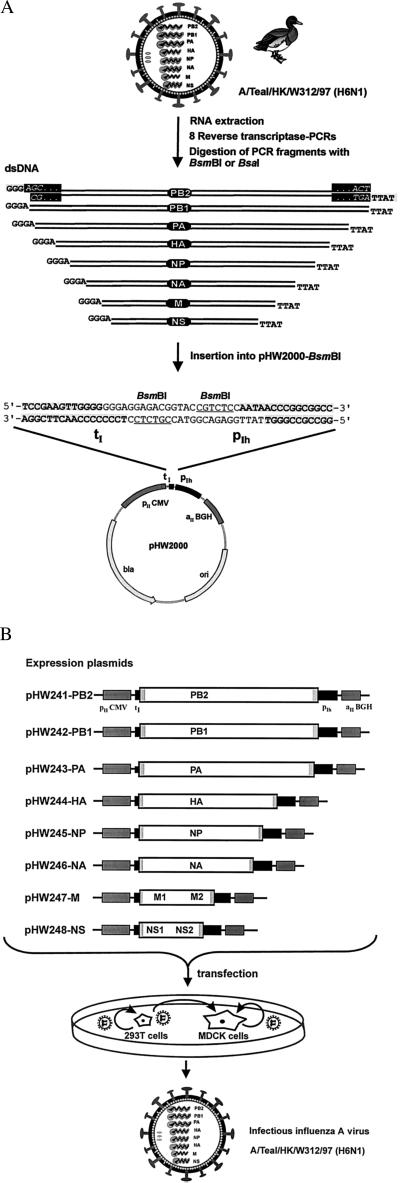Figure 3.
Schematic representation of the method developed for the construction and transfection of the eight expression plasmids to recover A/Teal/HK/W312/97 (H6N1). (A) Viral RNA was extracted from virus particles. RT-PCR was performed with primers containing segment-specific nucleotides and sequences for the type IIs restriction endonucleases BsmBI or BsaI. The eight viral PCR fragments were digested with BsmBI or BsaI and inserted into pHW2000 (linearized with BsmBI). This insertion resulted in eight expression constructs where the viral cDNAs are precisely fused to the pol I promoter and terminator (the viral terminal sequences AGC… ACT are shown for the PB2 segment in the black rectangles). (B) The eight expression plasmids with a pol I promoter and a pol II promoter contain one copy of each of the viral cDNAs of the eight segments. The open reading frames for the 10 viral proteins are flanked by the segment-specific noncoding regions (gray boxes). Because the used human pol I promoter shows high activity only in cell lines derived from humans or related species, we cocultured human 293T cells together with the standard cell line used for influenza A (MDCK cells). Viruses produced in the 293T cells after transfection can then infect MDCK cells and replicate.

